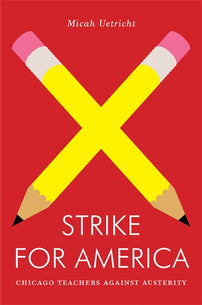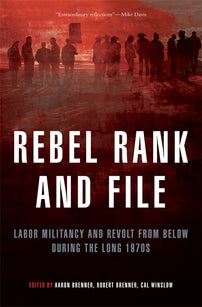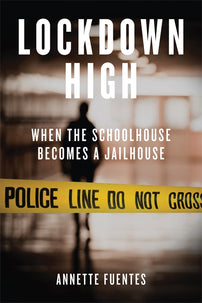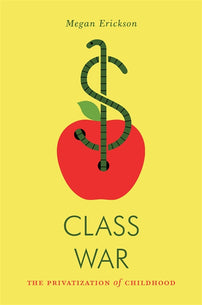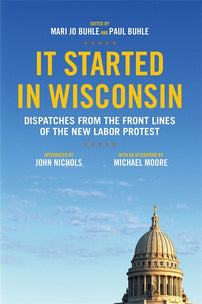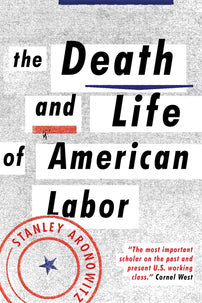Striking Teachers and Wildcat Politics
Capitalism needs teachers. Teachers are learning that they don’t need capitalism.

First published at From the River to the Sea.
Capitalism needs teachers. Teachers have learned that they don’t need capitalism.
That was the loudest message of “Voices from the Teachers Strike,” a powerhouse demonstration at Labor Notes this weekend in Chicago of the social power teachers hold.
Two veterans of the recent West Virginia Teachers Strike, Emily Comer and Olivia Harris; Tammy Berlin, a Jefferson County, Kentucky teacher; and Rebecca Garelli and Dylan Wegela, two leaders of a developing strike in the state of Arizona, showcased the militancy and wildcat spirt of the strikes that have revised all discussion in the U.S. about the state of public education. The day after Labor Notes, I traveled to Kentucky to talk with striking teachers.
Here were my own political takeaways on the significance of what has already happened:
– Forty years of neoliberal attack on public education have come home to roost. Exactly as socialists like to predict, state and federal assault on working conditions, wages, benefits and teacher autonomy have produced a "class for itself" in public education. These teachers now recognize the social power their work holds, and the power of withholding it. They also perceive their fight as a class war waged from above. Kentucky teachers used the word “oligarchy” to describe Koch-brother funded support for charter schools and attack rhetoric from a state Governor describing them as enemies of business.
– Workers in the U.S. can and should strike illegally in right-to-work states. They have nothing to lose, and much to win. Teachers from West Virginia — which is "right-to-work" — said teachers never worried that a potential strike could be illegal, only that they win if they do so. The teachers have set a precedent and a bar for workers in other right-to-work states who can and should see the power of breaking the law.
– As Tithi Bhattacharya, Sara Farris, and Kate Doyle Griffiths have argued, women are leading this workers’ uprising. This is historic. Nearly 80 percent of public school teachers in the U.S. are women. Nearly all of the leadership of strikes in Oklahoma, Arizona, Kentucky, and West Virginia is female. Nema, who organized the "wildcat sickout" of public sector workers identifies as a mother who likes to hell raise and smoke cigars. Gendered social relations are being exposed in these strikes. "Class" means the working conditions of women, the social reproductive role teachers play in reproducing labor power for capital, and the critical relationship between the domestic sphere and the work sphere. For example, some striking teachers, as in West Virginia, have conjoined their strike efforts to preserving abortion rights.
– For the first time in U.S. labor history since mass protests against slavery led by slaves themselves — what W.E.B. Du Bois called the "general strike" against slavery — the South is leading a strike wave. The universalizing effects and heightened contradictions of neoliberalism have created conditions for the overcoming of exceptionally difficult work and organizing in the workplace for southern workers set in the formative years of U.S. capitalism. This, too, is historic.
– Striking teachers want more than education reform. In addition to protecting their pension and wages, they seek to challenge the hegemony of the two-party system, and raise the power of their class to a new level. In Kentucky, teachers linked the fight for wages and benefits to a war on privatization. The strike has given them confidence that mass direct action can get the goods. As one striking teacher put it, “We learned we would never have to back down again.” She was referring to a new kind of politics the strike was giving birth to that is organic, incipient, and untethered to tradition.
What needs to happen next? What remains to be done?
– Striking teachers need to connect their strikes to attacks on racial minorities in public education, including unequal disciplining of Black students; to the precarious conditions of immigrant and migrant students; to DACA, to Dreamers. The Chicago Teachers Union strike of 2012 used the term “educational apartheid” to describe the unequal effects of charter schools, privatization, school closings and funding cuts on non-white students. In Kentucky, two Louisville middle school teachers in one of the poorest districts connected the strike to state legislation targeting "gang activity" — code word for surveillance of their own students. Other Kentucky teachers saw the strike as a fight to keep teachers of color in the system. To be as broad as possible, to bridge teachers and students of color in urban and rural areas, the teachers’ strikes must be explicitly anti-racist, especially in southern states where race has been used in exceptional ways to divide the working class, and destroy unions themselves.
– Striking teachers need to continue their break with the two-party duopoly. A common sentiment at the Labor Notes meeting was "vote all the enemies out of office" and run teachers for office. In both Kentucky and West Virginia, teachers are filing to run for office in droves. But running teachers for office within the confines of the Democratic Party will return us to the disaster in public education the Democrats have already co-created. The teachers’ strikes can be an incentive for political activity outside of the electoral arena — wildcat politics — and the creation of new kinds of democratic self-governance.
– The teachers’ strikes need to generate cross-industry alliance and solidarity especially between public sector and private sector workers. Teachers have been a primary target of attack on public sector unions for a decade. A Supreme Court ruling in the Janus vs. AFSCME case against unions would would eliminate “fair share fees” paid by public sector non-union members who benefit from collective bargaining. It would seriously damage public sector and unions but affect all workers. A wave of sympathy strikes and solidarity actions would help build momentum now against the possible effects of a negative Janus ruling.
– First-time strikers are learning anew the limits of bureaucratic unionism. Every Kentucky teacher I talked to when asked was opposed to the recommendation by the Kentucky Teachers Association that they return to work after a successful sickout. Betrayal and anger with union officials have already made them rethink the relationship of rank-and-file to the union. This is a healthy development and can be instructive for other U.S. industries where the rot of entrenched leadership has muzzled precisely the kind of strike action we’ve seen in this teachers’ wave.
– The Left needs to throw all of its support and energy behind the teacher strikes. This wave is a wave. There is no time to wait, or dawdle. To lift a phrase from the 1970s, “Don’t Iron While the Strike Is Hot.” Class militancy, big demands, wide-open thinking about the potential of new class struggle, and a new labor movement, must be the order of the day.
[book-strip index="1" style="display"]